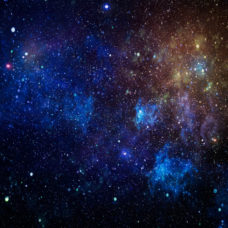A new eco-friendly and scalable technique uses special nanocrystals as catalysts, instead of noble and toxic materials, to convert sunlight into clean power.
Renewable energies, like solar on which the world pins most of its hopes, might be carbon-free, but that doesn’t mean they’re 100% clean.
Photovoltaic technology is mature enough by now that it can fit grid-scale installations, as well as small private needs.
However, there are still some technical challenges in the manufacture of solar cells that limits their worldwide rapid deployment.
Read More: Biogenic Solar Cells can Convert Light to Energy Even on Cloudy Days
To collect and convert sunlight into electricity, solar cells contain highly toxic materials, like cadmium, and other expensive noble metals.
And for cheap and clean solar, we need to get rid of these materials, and researchers from Curtin University in Australia might have found how.
Cheap and Non-Toxic Nanomaterials for Solar Cells
A research team from the Curtin Institute of Functional Molecules and Interfaces, at Curtin University, Australia, used nanocrystals for the catalysis of solar energy, removing toxic cadmium and noble metals completely out of the equation.
Guohua Jia, who led the study, has conducted a lot of research into semiconductor nanocrystals, electronic properties of nanoparticles, and optoelectronics.
Dr Jia explains:
“Previously, in order to use catalysts to derive energy from sunlight and transfer it into clean fuels such as hydrogen, we would have had to use cadmium-based semiconductors in combination with expensive noble metals including platinum, iridium and ruthenium. However, the high toxicity of cadmium and the high cost of noble metals are considerable obstacles to their widespread use”.
Read More: Organic Solar Cells set new Energy Record Proving Viability
Dr. Jia and Co. invented nanomaterials that contain no toxic materials or scarce and costly noble metals.
This new method promises more environment-friendly and cost-effective conversion of solar energy into clean fuels, like hydrogen, “which is considered a key fuel in the transition to a low carbon economy”.
“These nanomaterials may be of great interest to the energy industry, as they are made from cheap and near-abundant elements and offer industries a potential cleaner and cheaper fuel source,” added Dr. Jia.
The full paper of the study was published in the journal Advanced Materials and is available at the Wiley Online Library.



















Only 5% of the PV market uses toxic materials and another 3% uses noble materials.